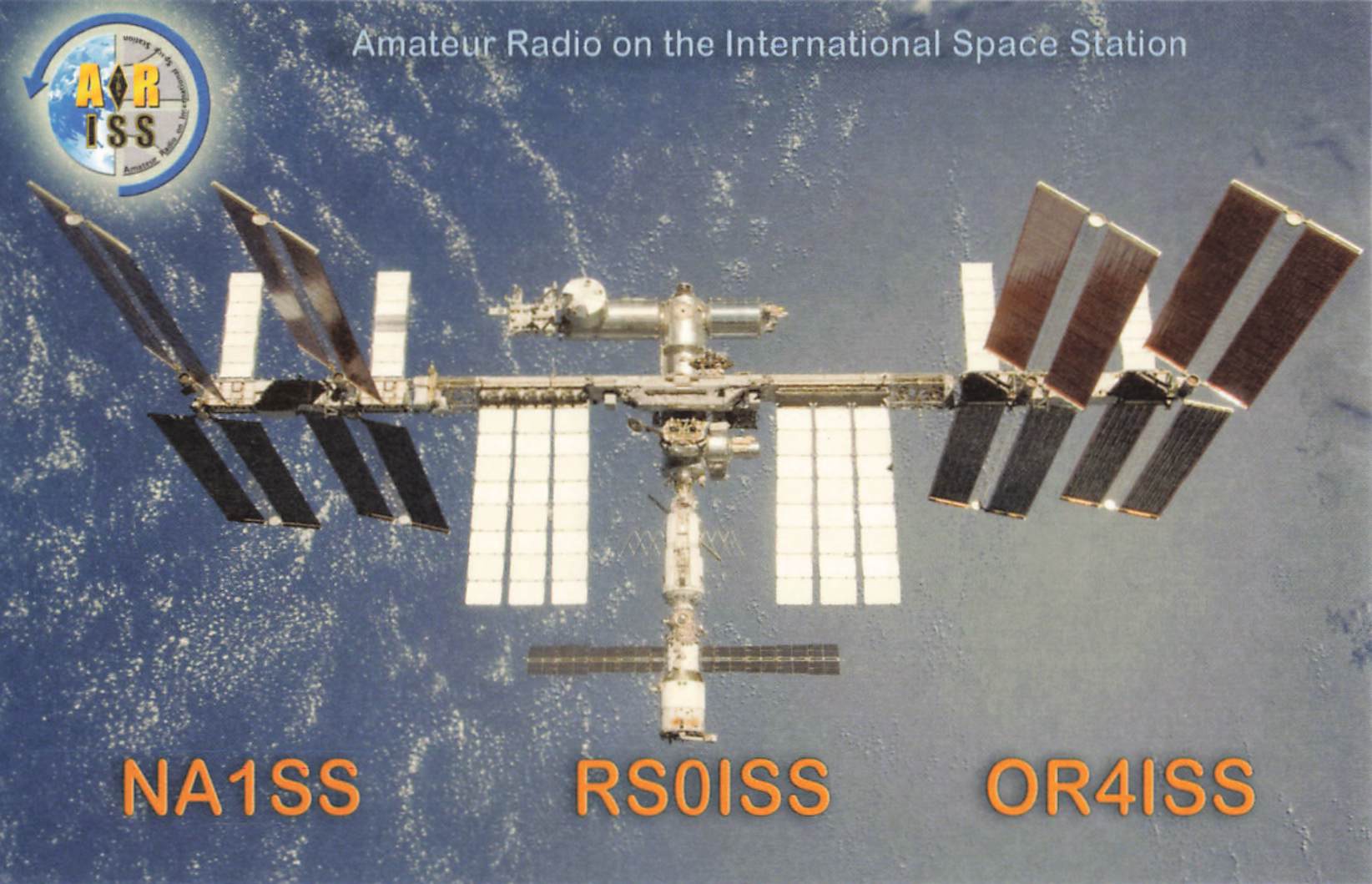NASA astronaut Kjell Lindgren brought joy to many radio amateurs in recent weeks when he contacted them directly from the space station via the ISS repeater, giving some a QSO with NA1SS. In the past three to four years, there were mostly no connections with the crews outside of school contacts. On Friday 22 July, NA1SS was heard over Europe in the evening, allowing European radio amateurs to make a QSO. The following day, Joshua, DL3JOP, was able to make a QSO with NA1SS at 18:08 UTC.
Motivated by this, John, DK9JC, also set off with his portable equipment to hear his call confirmed by Kjell on the next overflight 1.5 h later (21:45 h local). Anyone who also wants to try their luck should have a 2 m and 70 cm directional antenna and a full duplex transceiver system. The repeater's frequencies and CTCSS can be found on the ARISS website. Apps such as Look4Sat or ISS Detector help to align and track the antenna. The Doppler shift of the frequencies during the overflight must be taken into account. To give other radio amateurs a chance, follow the operation before pressing the PTT and do not interrupt ongoing QSOs.
Joshua used a homemade Yagi with 4 elements on 2 m and 7 elements on 70 cm together with two handheld radios for his QSO. John relied on the Arrow II antenna with two mobile radios. "We are happy that astronaut Kjell Lindgren (personal call: KO5MOS) in his scarce free time on the International Space Station offered us the chance to have a QSO with an astronaut," report DK9JC and DL3JOP.
The recordings of the QSOs can be found on Twitter:
I am very happy to work @astro_kjell #NA1SS 🇺🇸 on board the International @Space_Station 🛰️ #ISS @ARISS_status #ariss thank you @dl3jop for the heads-up and the last minute #ctcss. 👌 Heard also @M0GIW @M5Jfs #G6JEM @ES4RM to get a QSL. 📡 pic.twitter.com/r7yg9eGuXR
— John, DK9JC 🛩️👨✈️🇺🇦 (@DK9JC) July 23, 2022
Very happy to got this one: soundcloud.com/dk9jc/dk9jc-wo
https://twitter.com/dl3jop/status
A short recording of the contact from my phone which makes the downlink when transmitting hard to hear.
— Joshua (@dl3jop) July 23, 2022
Thank you @astro_kjell for giving us the opportunity to talk to an astronaut on the @ISS_Research 😇 pic.twitter.com/3Xj7ZP9W3N
Here is the back of the QSL card:
After the QSO you have to contact your local ARISS QSL Manager, depending on where you live. Here is the list: https://www.ariss.org/qsl-cards.html
The Manager for my area was Christophe, F1MOJ. Instead of sending money cash I was happy to see I can send paypal also. That is not obvious on the website. Make sure you send to "Friends and Family", otherwise F1MOJ will not get the full amount. I have also sent my QSL-card but others did not. The QSO details per e-mail were enough for them. I also included a self-addressed envelope. F1MOJ just needed a few days to reply. He is a very good guy and does not like delay and backlog.
My equipment:
The antenna was a slightly modified Arrow Antenna 146/437-10BP with 3 ele for 2m and 7 ele for 70cm. RX was my Yaesu FT-817 and TX was not my normally used FT-818 for full duplex SAT.
I used my Yaesu FTM-3100 as TX for the first time as I knew with QRP it would be almost impossible in the mess. If you heard ISS passes in the last days you know what I mean. Since NA1SS is qrv, it is even crazier.
Sure Martin.
— John, DK9JC 🛩️👨✈️🇺🇦 (@DK9JC) July 24, 2022
Ant: Arrow 3 ele for 2m, 7 ele for 70cm
RX: Yaesu FT-817
TX: Yaesu FTM-3100
All handheld and manually controlled (easy with FM)
Location City of Saarbrücken, near the University. pic.twitter.com/lCl3P7eo8a

